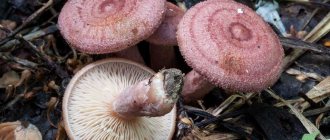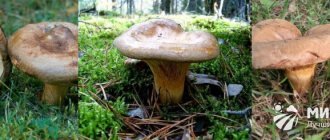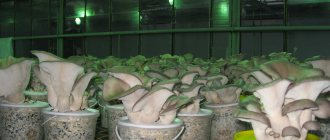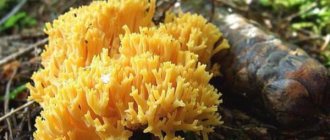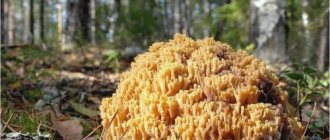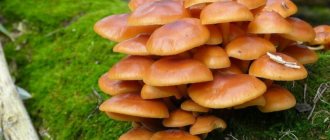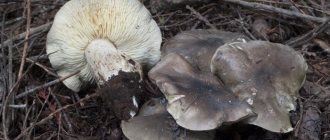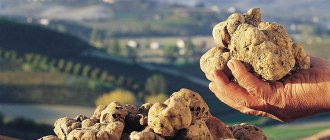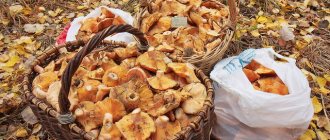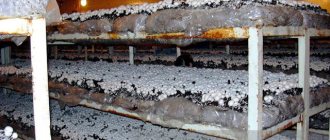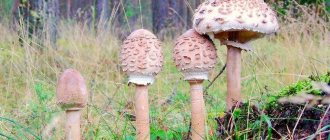Short description
| Type of mushrooms: | Edible |
| Other names (synonyms): | Belyanka, Volzhanka |
| Latin name: | Lactarius pubescens |
| Family: | Russulaceae |
| Distinctive feature: | Lactarius pubescens is an unusual fungus known as downy milk cap that is commonly found under birch trees. |
| Beginning of the season: | August |
| End of season: | October |
| Leg height (cm): | 2-4 cm |
| Cap width (cm): | 5-9 cm |
| Smell: | sweet |
| Taste: | caustic |
| Tasting score: | [kkstarratings] Have you tried this mushroom? Then rate it! |
| Hat: | convex, depressed in the center, with strongly tucked edges, which unfold as the mushroom ripens. With age, many specimens acquire a funnel-shaped shape, especially for mushrooms growing in open areas. The surface of the cap is highly fleecy, especially along the edges of young specimens; depending on growing conditions, the color changes from almost white to pink, with a dark area in the center; old mushrooms turn yellow. The concentric zones on the cap are almost invisible. |
| Leg: | short, cylindrical or tapering towards the base, brittle, dry, hairless, sometimes with vague brownish spots. |
| Hymenophore (bottom of cap): | the plates are descending, frequent, narrow, whitish-pinkish, and when damaged they acquire a milky yellow color. |
| Disputes: | ellipsoidal, 6.5-8 x 5.5-6.5 microns; decorated with small amyloid warts and low amyloid ridges with several cross-connections forming an incomplete irregular network. |
| Pulp: | dense, white and fragile. |
| Natural environment and mycorrhiza: | on the ground in damp areas under birch and other deciduous trees. |
| False doubles: | Lactarius torminosus has a salmon-pink woolly cap that has a fibrous edge and its spores are larger than those of Lactarius pubescens; it also grows under the birch tree. |
| Growing: | – |
| Use: | suitable for pickling and pickling, but it must first be soaked and then boiled for a long time and thoroughly. |
| Medicinal properties: | – |
| Spreading: | throughout temperate Europe and comes from eastern North America. |
A beautiful porcini mushroom with a gentle name has gained wide popularity among lovers of quiet hunting. Whitefish is a conditionally edible species and has good taste characteristics. Find out what doppelgängers you can confuse the white mushroom with, and how to properly and tasty prepare the mushroom for the winter.
Description, structure and characteristics of the mushroom
Belyanka, or White trumpet, is a mushroom of the Milky genus of the Russula family. Other names: White fluffy, White milk mushroom, White plate, Volzhanka. Latin name: Lactarius pubescens.
The fruit body has a light cream color. The size of the cap is 4-6 cm in diameter. In young specimens it is slightly curved inward, and in adults it is slightly straightened. Its shape resembles a wide rounded funnel, the color is milky, and in the middle, closer to the recess, it is yellowish-pink, without clear lines, blurred closer to the edges. The bottom of the cap can be snow-white, pinkish or light yellow.
The hymenophore (the lower part of the cap) consists of adherent or slightly descending plates; they are frequent, white, narrow. The spore powder is chalk-colored or cream-colored.
When cut, the pulp is white, fragile, and when broken it emits a pleasant mushroom aroma. When broken, it releases a snow-white milky juice that does not change color in air.
Attention! The milky juice of the white mushroom has a bitter taste, so these mushrooms must be boiled before use!
The height of the stem can be different, it all depends on the area where the fruiting body grows. If it grows in an open place, then the size of the leg will not exceed 4 cm.
If the fungus is in tall grass, the stalk can reach 6 cm in height. The thickness of the part is about 2 cm, the shape is cylindrical, tapering downward. The color of the cap and legs match.
A little history
This species was first described and given a binomial name (Lactarius pubescens) in 1838 by Elias Magnus Fries, a Swedish botanist and the father of mycology.
How to pickle white mushrooms for the winter
Pre-soaked mushrooms are suitable for cooking; for one kilogram you need 60 grams of salt, 3 cloves of garlic and the same amount of bay leaf, a couple of black peppercorns and allspice, as well as a pinch of dill seeds.
After soaking for three days, the mushrooms are boiled for about half an hour; after boiling, bay leaves, salt, spices and dill are added.
After cooling, the mushrooms are placed in pre-prepared jars with their caps down, filled with brine and rolled up.
The jars are placed upside down and wrapped in a blanket. After two days they can be opened, washed and labeled.
Such whites are perfectly stored in the kitchen cabinet.
Time and place of fruiting
The habitat of the white butterfly is the Urals, the North Caucasus, Siberia, the central and northwestern regions of the European part. White lamina prefers young birch forests, but can also grow in coniferous forests, but the main condition is the presence of birch.
Often found in places with high humidity, on forest edges and clearings, along forest and country roads.
Harvesting occurs in August and continues until the first half of October. Fruiting is usually abundant and gradual. It happens in waves.
Secrets of experienced mushroom pickers for you
Tricks for collecting wild mushrooms:
- Bring a sturdy basket and a pocket knife.
- You can meet the white moth at the edge of a birch forest.
- If you go to the forest in August, then use a stick to touch suspicious bumps. This is excellent protection against snakes.
- During mosquito season, bring repellent with you.
- Don't forget to choose the right clothes - they should completely cover all parts of your body.
- When you return from the forest, be sure to remove your belongings and inspect them for ticks.
- For hiking in the forest, choose a clear day to make it easier to navigate by the sun.
Growing at home and in the country
It is quite possible to grow white volnushka in your summer cottage with your own hands. For this you will need:
- mushroom mycelium (1 pack);
- birch or deciduous tree no older than 4 years;
- soil for indoor plants – 5 l;
- moistened hardwood sawdust – 1 kg;
- moss, leaf litter.
A simple way to grow whites:
- Prepare the substrate: mix sawdust and soil.
- Dig 3 holes with a diameter of 10 cm and a depth of 20 cm near the tree around the circumference.
- Fill the holes up to half the volume with the prepared substrate, arrange the pieces of mycelium at the rate of: a third of the bag per hole.
- Fill the hole with soil to the edges and compact it firmly.
- Slowly pour one bucket of water and lime into each hole.
- Sprinkle with moss, leaf litter, and cover with branches.
Important! In summer, you need to water the holes at least 3 times a week (1 bucket for each hole) to avoid drying out the soil.
The next year after sowing, the first mushrooms will begin to appear in July. After 12 months, when the mycelium has taken root well, the yield will double. Fruiting lasts from 3 to 5 years. In one harvest you can collect from 10–15 fruiting bodies from one tree.
Reference! You can plant whites all year round; you don’t have to wait for warmer weather to do this.
Contraindications
Mushrooms should not be consumed if you have digestive problems.
In some cases, the mushroom is contraindicated:
- increased stomach acidity;
- cholecystitis;
- pancreatitis;
- after removal of the bladder, when the process of removing liquid metabolic products is difficult;
- for chronic diseases of the digestive system;
- if there are problems with internal organs, this product can cause more severe irritation.
False doubles
The white wave is often confused with its “sister”, the pink wave. They differ not only in color. These mushrooms really have a lot in common, but in hot weather, for example, the latter can fade and turn white, and then it is almost impossible to distinguish them.
Another difference is that the pink trumpet chooses old birch trees, while the white trumpet loves young ones. Of course, no one will get poisoned if they confuse these species, but it is still worth knowing about these differences. Pay attention to the photo.
Volnushka pink
Another similar species, or rather a variety of white mushroom, is the violin mushroom. These two fruiting bodies are so similar that sometimes even an experienced mushroom picker cannot distinguish them. The violin is not so juicy, and it has practically no legs.
In addition, it has plates with a reddish-flesh tint, and sometimes even brown, while those of the whitefish are pale.
After cooking, the violin becomes dry and characteristically creaks on the teeth, which is why it got its name among the people.
Violin
White saffron milkweed is easily confused with saffron milk caps. If you look at both views from above, the difference between them will be almost invisible. Unless the color of the saffron milk caps will be brighter. In addition, they do not have a fluffy border around the edges of the cap.
In saffron milk caps, the milky juice tastes bitter, but in saffron milk caps it does not. The legs, although the same in shape, also differ in color. In saffron milk caps they are orange and the juice is the same color, while saffron milk caps have light legs and white milky juice.
Ryzhik
Experienced lovers of quiet hunting quite reasonably believe that the white trumpet, although similar to many other species of milkweed, is nevertheless the only one with such a beautiful, pubescent cap.
Are there white waves?
The closest relatives of the trumpet are russula. In appearance, they resemble saffron milk caps, only their color is different, and the edges are curled and velvety. There are several subspecies that differ in color, but their taste is almost the same.
In addition to the white variety, there are:
- pink, or Volzhanka;
- yellow, or wave;
- gray, or milky gray.
The most popular are pink and white waves. The former are distributed throughout Russia. White mushroom, or white mushroom, grows in large quantities in Siberia.
Evaluation of taste qualities, medicinal properties, benefits and possible harm
The white mushroom belongs to the second category of edibility. Like all lamellar species (green grass, russula, camelina, milk mushroom) it requires preliminary soaking.
Benefits of white lamellar:
- the glycemic index is 10, which allows people with diabetes to consume the mushroom without fear;
- low-calorie product - 20–25 kcal/100 g. Digestion of fruiting bodies requires a long period of time, so the feeling of fullness is maintained for a long time, the body does not require additional meals.
- a large amount of vitamin B5. This microelement neutralizes the harmful side effects of antibiotics on the body, so eating whites is especially useful for people who have suffered severe infectious diseases;
- a large amount of protein, fats, carbohydrates. If you constantly include whites in your diet, you will notice an improvement in the condition of your skin, hair, and vision.
Possible harm:
- Do not forget that the increased protein content in fruiting bodies can harm the body.
- You should not eat volushki more than 3-4 times a week. Chitin, contained in any mushrooms, is difficult to digest by the body and overloads the gastrointestinal tract.
- Doctors recommend eating whites not at the beginning of the day (for breakfast), but for dinner. The point is tryptophan, which has a relaxing effect.
How to pickle whites (video)
- pickled whites - 200 grams;
- onion - 200 grams;
- vegetable oil - 4 tablespoons;
- salt, black pepper.
- Fry finely chopped mushrooms and onions separately, stir;
- Season the cooled filling with salt and pepper and spread among the pie crusts.
Despite the good taste of whitefish, their use has a number of contraindications.
It is not recommended to include them in the diet of people suffering from pancreatitis and cholecystitis, as well as those with low stomach acidity. You should not eat them after removal of the gallbladder, as a sharp exacerbation of many chronic diseases of the digestive tract may occur. If the bitterness is not completely removed from the whites, irritation of the mucous membranes of the internal organs may occur. In this regard, it is necessary to carefully follow the rules for their preparation.
Mushroom dishes are loved and revered by many; they are ideal for both a regular meal and a holiday table. Separately, it should be noted that this method of preparing them is salting. For those who know how to pickle mushrooms, this process will not be difficult. Beginning cooks need to strictly adhere to all the rules so that the preparation is not only tasty, but also well stored.
Mushroom dishes are loved and revered by many,
The good thing about pickling mushrooms is that you can then fry this preparation, marinate it, add it to soups, and simply put it on the table as a snack.
In order for pickles to be safely included in the diet, you need to follow certain rules during preparation:
- before salting begins, all forest products are sorted by variety;
- mandatory cleaning of each specimen from dirt;
- soak for at least 12 hours in cold water. Sometimes this process can last up to five days;
- during soaking, change the water at least once every three hours;
- overly contaminated specimens are first soaked in salt water for several hours and only then in normal water;
- The stems of lamellar mushrooms must be cut off;
- large specimens are cut into several parts;
- the dry salting method is only suitable for saffron milk caps and some varieties of russula;
- the cold salting method is acceptable when preparing milk mushrooms and milk mushrooms, as well as volushek, russula, valuev and white milk mushrooms;
- For all other varieties, only the hot salting method is allowed.
Cooking recipes
Cooking white volushka is a pleasure, it’s simple and not at all difficult! This type can be fried, pickled, pickled, grilled, mushroom fried and many other delicious dishes.
Primary processing
For cooking, it is better to choose small fruits - they have a denser consistency. Older specimens are also suitable for salting, but they are also cut into pieces. The fruits need to be sorted, spoiled areas should be removed, spoiled mushrooms should be thrown away. Rinse the fruiting bodies.
It is recommended to soak whites at least 3 times. To do this, they are filled with cold water each time. Infusion should last at least a day or even three.
Cooking
For this method, soaked and washed white trumpets are placed in boiling salted water (40–50 g of coarse salt per 1 liter of water) and boiled for about 10 minutes, periodically removing the foam. Then drain in a colander, rinse under running water and leave to drain excess liquid.
Hot marinating
These mushrooms are extremely appreciated by lovers of quiet hunting and gourmets. The whites turn out crispy, elastic, and very tasty. They will retain the aroma of the autumn forest and the subtle taste of spices and herbs.
Ingredients:
- wavelets – 1 kg;
- coarse salt – 2 tbsp;
- water – 1 large glass;
- vinegar - 4 tbsp. l.;
- dill – 1 bunch;
- black pepper, bay leaf - 3 pcs.
How to marinate:
- The whites need to be cleared of forest debris, washed thoroughly, and the legs trimmed.
- Immerse the fruiting bodies in boiling water and add salt.
- Bring the mixture to a boil.
- As soon as the mushrooms rise to the surface, add spices. Cook for another 15 minutes.
- Pour in vinegar. As soon as the fruits are at the bottom of the pan, you can turn off the heat.
- Place the volushki in previously prepared clean jars. Seal and store in a cool place.
Note! Only white caps are suitable for pickling. The legs must be removed, as when harvested they become very tough and unsuitable for consumption.
Freezing
If you want to prepare mushrooms for the winter, after cleaning the mushrooms from forest debris and removing old, wormy or damaged specimens, you need to soak them for 3 days and then boil them in salted water.
After this, they can be divided into small portions and sent to the freezer (it is better to use quick deep freezing), where they can be stored for a year.
Please note: divide the washed fruit bodies into small portions so that after defrosting you do not have to re-freeze them.
Frying
Try cooking fried whitefish in batter. This simple recipe will feed the whole family a hearty, flavorful dish!
Ingredients:
- white plates -1 kg;
- salt – 1 tbsp. l.;
- water – 1 l;
- flour – 2 tbsp. l.:
- garlic and dill - to taste;
- vegetable oil.
How to properly fry whites:
- Boil the peeled, soaked fruit bodies in water with added salt until half cooked.
- Then place spices, garlic, dill into the broth and cook until fully cooked.
- Place the fruits in a colander and let the liquid drain.
- Dip each mushroom in flour and fry in a frying pan with heated sunflower oil.
- Serve hot with any sauce.
Cold salting
This recipe assumes the use of any containers, but preference should be given to glass bottles, enamel buckets, and wooden tubs. Before salting, they need to be doused with boiling water and washed well. Whitefish should also be salted only after pre-treatment.
Important! Only coarse salt is suitable for pickling. Iodized and extra cannot be used for canning!
Components:
- wavelets – 1 kg;
- salt – 60 g.
Cooking method:
- Sort through, clean the fruiting bodies, soak for several days before salting.
- Sprinkle the bottom of the container generously with salt.
- Place a layer of mushrooms 5 cm high, sprinkle with salt again.
- Repeat the process until the waves are gone; the last layer should also be salt.
- Place a clean cloth on top and place a weight.
- Salting will take 40 days. After this time, you can put the salted whites in clean glass jars, fill them with hot brine and seal (if you need to extend the shelf life).
- The pickling should be placed in a cool place so that the product does not ferment.
Drying
All types of tubular edible mushrooms are suitable for drying: porcini mushrooms, boletus mushrooms, boletus mushrooms, boletus mushrooms, and fly mushrooms. Lamellar mushrooms - milk mushrooms, saffron milk caps, valui and, in particular, white milk mushrooms - are undesirable to dry.
They may acquire a slight bitter taste during drying due to the presence of milky juice.
Canning for the winter
Whitefish are highly valued for their excellent taste and good pickling qualities. Housewives often preserve them for the winter.
Ingredients:
- wavelets – 1 kg;
- water – 1 tbsp.;
- salt – 30 g;
- vinegar – 1 tsp;
- cloves, black pepper - a few peas;
- Bay leaf;
- a pinch of dry dill;
- citric acid, cinnamon - to taste.
Step by step cooking method:
- Pour water into a large container, bring to a boil, place the cleaned, pre-processed mushrooms.
- Add spices, salt, bay leaf.
- Boil the fruiting bodies for about 30 minutes, add vinegar and cook for another 10 minutes.
- Place the finished mixture in sterilized jars and pour boiling marinade over it.
- Seal with lids, roll up and send after cooling to a cool place (cellar, basement, refrigerator).
Important! To make the mushrooms firm and crispy, you can add a pinch of cinnamon. To preserve the color, citric acid is also added, otherwise the fruiting bodies may acquire a grayish tone.
How to salt: step-by-step instructions
50 photos of different types of violin mushrooms, ? description, their beneficial properties and contraindications
1st step
Take the whites, wash and clean them of needles, dirt and leaves. Then place in cold water and soak for several days. In this case, you should change the water every 12 hours.
2nd step
While the mushrooms are soaking, prepare the container in which you will pickle them. As for pickling other products (for example, cucumbers), you can use a glass, enamel, or wooden container that is intended for food products. Any container you choose should be washed and, if possible, held over steam to sterilize.
3rd step
Time is up - the white mushrooms (mushrooms) are soaked. How to salt the product? First you need to drain the water, then put the dill stems, bay leaves, and garlic into a container. Place a layer of mushrooms on top with the caps facing inward.
4th step
Salt the mushrooms generously and again place a layer of seasonings on top. Repeat this procedure until the white mushrooms (mushrooms) are gone. You now know how to salt the product. The prepared containers should be covered with dry gauze on top and pressure should be placed on it.
5th step
Place the container with mushrooms in a cool place. In a few days they will settle, and a new batch can be added to them. If after some time you notice that there is little brine left in the containers, then increase the weight of the oppression. Whitefish can be eaten after 40-60 days. Bon appetit!
